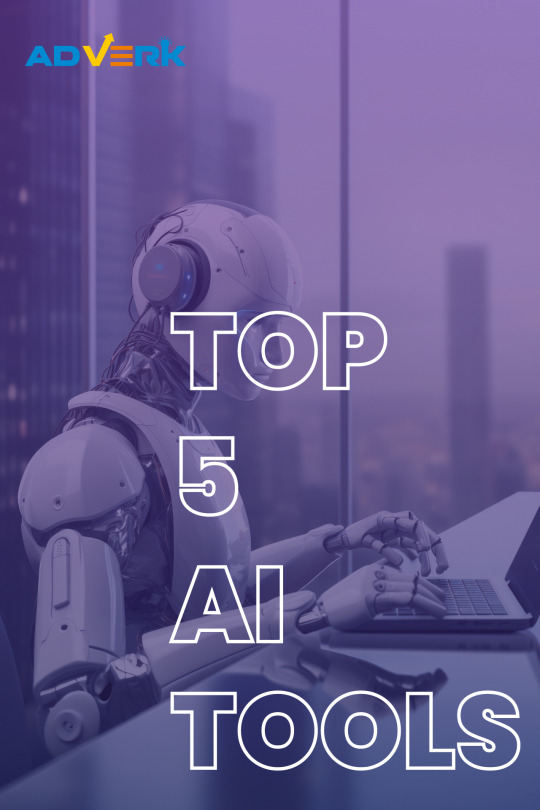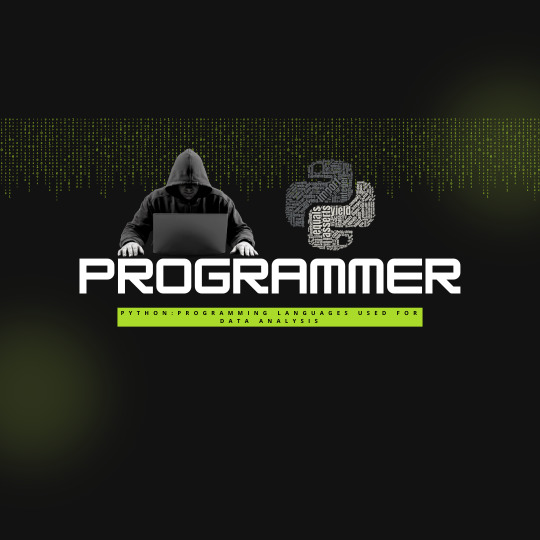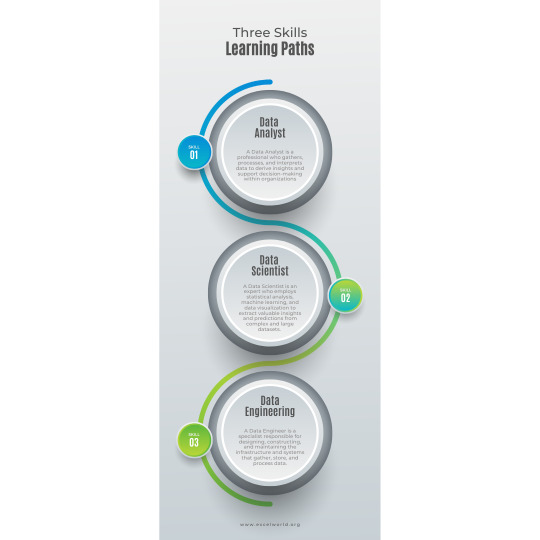#ScikitLearn
Explore tagged Tumblr posts
Text
#LinearRegression#MachineLearning#DataScience#AI#DataAnalysis#StatisticalModeling#PredictiveAnalytics#RegressionAnalysis#MLAlgorithms#DataMining#Python#R#MATLAB#ScikitLearn#Statsmodels#TensorFlow#PyTorch
1 note
·
View note
Text
Creating a Machine Learning-Powered Recommendation System with FastAPI and Scikit-learn
🔍 Interested in building a recommendation engine? Learn how to use FastAPI and Scikit-learn to create and deploy a machine learning-powered recommendation system as a REST API. We offer help with:
Setting up FastAPI and Scikit-learn.
Developing the recommendation model.
Deploying your system as a REST API.
💬 Contact us on WhatsApp at +971501618774 for personalized support!
0 notes
Text
Top 5 AI tools

TensorFlow: TensorFlow is an open-source machine learning framework developed by Google. It provides a comprehensive ecosystem of tools, libraries, and resources for building and deploying AI models. TensorFlow supports deep learning, neural networks, and other numerical computations, making it a widely used tool in the AI community.
PyTorch: PyTorch is another popular open-source deep learning framework that is widely adopted by researchers and practitioners. Developed by Facebook's AI Research Lab, PyTorch offers a dynamic computational graph that allows for easy model prototyping and debugging. It provides extensive support for neural networks and is known for its intuitive interface.
Scikit-learn: Scikit-learn is a widely used Python library for machine learning. It provides a range of supervised and unsupervised learning algorithms, including classification, regression, clustering, and dimensionality reduction. Scikit-learn offers a user-friendly interface, making it accessible for beginners while still providing advanced features for experienced practitioners.
Keras: Keras is a high-level neural network API written in Python. It serves as an interface to several deep learning frameworks, including TensorFlow and Theano. Keras simplifies the process of building and training neural networks by providing a user-friendly and intuitive API. It is widely used for rapid prototyping and experimentation in AI research and development.
Jupyter Notebook: Jupyter Notebook is an open-source web application that allows you to create and share documents containing live code, equations, visualisations, and narrative text. It supports multiple programming languages, including Python, R, and Julia, making it a popular choice for AI development. Jupyter Notebook provides an interactive and collaborative environment for data exploration, model development, and experimentation.
#jupyter notebooks#keras#scikitlearn#pytorch#tensorflow#ai#top5aitools#aitools#artificial intelligence#adverk
0 notes
Text

#PythonProgramming#DataAnalysis#DataVisualization#NumPy#Pandas#Matplotlib#Seaborn#SciPy#ScikitLearn#MachineLearning#DataManipulation#CodingInPython#PythonTutorials#PythonCommunity#PythonForDataScience#PythonStats#PythonCoding#PythonVisuals#PythonPackages
0 notes
Text
Techaircraft
Dive into the world of Artificial Intelligence with Python! 🐍💡 Whether you're a seasoned coder or just starting, Python’s versatile libraries like Tensor Flow, Kera's, and sci-kit-learn make it easier than ever to build intelligent systems. 🤖 From developing predictive models to creating advanced neural networks, Python is your gateway to the future of technology. 📈🔍 Explore data analysis, natural language processing, and machine learning with hands-on projects that unlock endless possibilities. 🌐💻 Ready to level up your AI skills? Follow along for tutorials, tips, and inspiration to turn your innovative ideas into reality. . 𝐖𝐞𝐛𝐬𝐢𝐭𝐞 - www.techaircraft.com
���𝐞𝐜𝐡𝐚𝐢𝐫𝐜𝐫𝐚𝐟𝐭 𝐬𝐮𝐩𝐩𝐨𝐫𝐭 𝐝𝐞𝐭𝐚𝐢𝐥𝐬:
𝐌𝐨𝐛𝐢𝐥𝐞 𝐍𝐮𝐦𝐛𝐞𝐫 - 8686069898
#ArtificialIntelligence#PythonProgramming#MachineLearning#DataScience#TechInnovation#NeuralNetworks#DeepLearning#CodingLife#PythonDeveloper#AIProjects#FutureOfTech#TechTrends#Programming#DataAnalysis#TensorFlow#Keras#ScikitLearn#LearnToCode#AICommunity#Innovation

2 notes
·
View notes
Text
A complete overview of the most essential components of data science and how to master them. If you are reading this article, it means that you are hoping to become a data scientist and you just don’t know where to start. This article will do our best to layout the most essential areas you need to look at to start diving deep into data science. We will also give you some of the best learning resources to do so. 1. Essential Theoretical Knowledge of Statistics and Calculus I think you kind of expected this to be the first one, but before you just skip to the other section or just another article, let me tell you why it needs to be the first point mentioned. An okay data scientist learns how to use a bunch of tools like PowerBI, Scikitlearn, etc. This will be fine for building baseline models, but you will soon find out that it’s not enough and you need to improve your model. This brings us to reading ML research papers. And you have to trust me on this, you will not understand most ML papers if you don’t understand essential statistics, and if you don’t understand most of the papers, you probably won’t be able to implement them and improve them, which is a big issue. I remember struggling with understanding ML papers at university, it used to take me a few days if not weeks to fully grasp them. However, all this changed when I spent a few weeks learning the fundamentals of statistics and calculus. Now, I can easily digest those papers in an hour or 2. If you haven’t already done so, you will not believe how much papers rely on those foundations. One very important point that I want to stress here is that I am not asking you to be an expert in these foundations. This is what most people struggled with in high school—being good enough at math and statistics to get through an exam. You don’t need this here. You just need to understand the foundations to digest the research papers. Understanding them is much easier than actually being good at solving theoretical math problems (which is a good skill to have, but a hard one to acquire). Khan Academy is an excellent place to start. You can start by checking out their algebra course here and their stats one here. 2. Essential Programming Basics You have now got your math and stats knowledge, now it’s time to move into something more practical and hands-on. A lot of people get into data science from non-technical backgrounds (which is actually quite impressive). Believe me when I tell you this, the worst way to learn programming is to keep watching courses endlessly. I know there are tons of articles and videos about learning programming and I don’t want this to just be another duplicate. I do however want to give you the most important tips that will help you save a lot of time. When I was learning programming basics I used to watch tons of tutorials, which was useful. But, a lot of people (including me) think that watching more tutorials equals improvement in our skills as programmers, it does not! Tutorials only tell you how to do something. But you never learn until you actually do it yourself. Although this seems straightforward and obvious, it needs to be said: it’s actually harder to code than just seeing other people code. So, simply put, here is the next tip: For every few tutorials you watch or articles you read, make sure you implement at least one of them. If you aren’t doing this, you are wasting your time. If you don’t believe me, feel free to check out articles by TraversyMedia and FreeCodeCamp that are going to affirm this idea. A lot of programmers realize this, but it’s usually a bit later than they should have. I am not going to point you to a course. Instead, I am going to point you to one of the best places to improve your programming skills and, more importantly, improve your problem-solving skills. I wish I had received this when I was at university because programming languages change all the time, problem-solving skills don’t. And when you actually start
applying for jobs, a decent interviewer will be examining your problem-solving skills, not your syntax accuracy. Start by integrating at least 2-3 hours every week of easy HackerRank or LeetCode into your schedule, if you are struggling. Watch some tutorials, but start with approaching the problems first (not the other way around). 3. Experience, experience, experience Photo At this point, you know your theory, you have good programming and problem-solving skills and you are ready to start gaining data science skills. The best way to do this is to start developing end-to-end data science projects. From my experience, the best projects must have at least a few of these components: Data gathering, filtering, and engineering: This can be as simple as an online search or as complex as building a web scraping server that aggregates certain websites and saves the required data into a database. This is actually the most significant stage because if you don't have data, then you don't have a data science project! This is actually the reason why a lot of AI startups fail. Once I realized this, it was quite an eye-opener for me, even though it's kind of obvious!“Model training is only the tip of the iceberg. What most users and AI/ML companies overlook is the massive hidden cost of acquiring appropriate datasets and cleaning, storing, aggregating, labeling, and building reliable data flow and an infrastructure pipeline.”—The Single Biggest Reason Why AI/ML Companies Fail to Scale? Model Training (this is too obvious to explain) Gathering metrics & exploring model interpretability: One of the biggest mistakes that I made in my first few ML projects was not giving this point due credit. I was extremely eager to learn and so I kept jumping from model to model too quickly. Don’t do this. When you train a model, fully evaluate it, explore its hyperparameters, check out interpretability techniques and, most importantly, figure out why it works well and why it doesn’t.One of the best places to learn these concepts (except data gathering) is on Kaggle, I can’t stress enough how much you will learn from doing a few Kaggle competitions. Model Deployment & Data Storage This is a very important step that a lot of people skip. You will need basic web development skills at this point. You don’t have to build a complete app around your model, but at least try to deploy it to a Heroku web app. You will learn so much. A central piece of your data science project is selecting the correct data storage framework. Keep in mind that your production model will be consistently using and updating this data. If you don’t choose the correct data storage framework, your whole app will face quality and performance issues. One of the fastest-growing storage frameworks is data lakes. “A data lake is a centralized repository that allows you to store all your structured and unstructured data at any scale. You can store your data as-is, without having to first structure the data, and run different types of analytics — from dashboards and visualizations to big data processing, real-time analytics, and machine learning—to guide better decisions.” — Amazon Data lakes are being widely used by top companies currently to manage the insane amount of data that is being generated. If you are interested, I suggest checking out this talk by Raji Easwaran, a manager at Microsoft Azure about the “Lessons Learned from Operating an Exabyte Scale Data Lake at Microsoft.” There are also frameworks that operate on data lakes that ease the consumption of data by machine learning models. I used to think that adding these layers is not that effective, but separating these operations into different layers saves you the time you will have to debug your models in the long run. This is actually the backbone of most high-quality web applications/software projects. Final Thoughts The biggest misconception I had going into data science was that it’s all about model fitting and data engineering.
Although that is, of course, an important part, it’s not the most difficult and significant one. There are multiple factors (as discussed above) that are in play when getting into data science and developing high-quality ML projects.
0 notes
Text
A complete overview of the most essential components of data science and how to master them. If you are reading this article, it means that you are hoping to become a data scientist and you just don’t know where to start. This article will do our best to layout the most essential areas you need to look at to start diving deep into data science. We will also give you some of the best learning resources to do so. 1. Essential Theoretical Knowledge of Statistics and Calculus I think you kind of expected this to be the first one, but before you just skip to the other section or just another article, let me tell you why it needs to be the first point mentioned. An okay data scientist learns how to use a bunch of tools like PowerBI, Scikitlearn, etc. This will be fine for building baseline models, but you will soon find out that it’s not enough and you need to improve your model. This brings us to reading ML research papers. And you have to trust me on this, you will not understand most ML papers if you don’t understand essential statistics, and if you don’t understand most of the papers, you probably won’t be able to implement them and improve them, which is a big issue. I remember struggling with understanding ML papers at university, it used to take me a few days if not weeks to fully grasp them. However, all this changed when I spent a few weeks learning the fundamentals of statistics and calculus. Now, I can easily digest those papers in an hour or 2. If you haven’t already done so, you will not believe how much papers rely on those foundations. One very important point that I want to stress here is that I am not asking you to be an expert in these foundations. This is what most people struggled with in high school—being good enough at math and statistics to get through an exam. You don’t need this here. You just need to understand the foundations to digest the research papers. Understanding them is much easier than actually being good at solving theoretical math problems (which is a good skill to have, but a hard one to acquire). Khan Academy is an excellent place to start. You can start by checking out their algebra course here and their stats one here. 2. Essential Programming Basics You have now got your math and stats knowledge, now it’s time to move into something more practical and hands-on. A lot of people get into data science from non-technical backgrounds (which is actually quite impressive). Believe me when I tell you this, the worst way to learn programming is to keep watching courses endlessly. I know there are tons of articles and videos about learning programming and I don’t want this to just be another duplicate. I do however want to give you the most important tips that will help you save a lot of time. When I was learning programming basics I used to watch tons of tutorials, which was useful. But, a lot of people (including me) think that watching more tutorials equals improvement in our skills as programmers, it does not! Tutorials only tell you how to do something. But you never learn until you actually do it yourself. Although this seems straightforward and obvious, it needs to be said: it’s actually harder to code than just seeing other people code. So, simply put, here is the next tip: For every few tutorials you watch or articles you read, make sure you implement at least one of them. If you aren’t doing this, you are wasting your time. If you don’t believe me, feel free to check out articles by TraversyMedia and FreeCodeCamp that are going to affirm this idea. A lot of programmers realize this, but it’s usually a bit later than they should have. I am not going to point you to a course. Instead, I am going to point you to one of the best places to improve your programming skills and, more importantly, improve your problem-solving skills. I wish I had received this when I was at university because programming languages change all the time, problem-solving skills don’t. And when you actually start
applying for jobs, a decent interviewer will be examining your problem-solving skills, not your syntax accuracy. Start by integrating at least 2-3 hours every week of easy HackerRank or LeetCode into your schedule, if you are struggling. Watch some tutorials, but start with approaching the problems first (not the other way around). 3. Experience, experience, experience Photo At this point, you know your theory, you have good programming and problem-solving skills and you are ready to start gaining data science skills. The best way to do this is to start developing end-to-end data science projects. From my experience, the best projects must have at least a few of these components: Data gathering, filtering, and engineering: This can be as simple as an online search or as complex as building a web scraping server that aggregates certain websites and saves the required data into a database. This is actually the most significant stage because if you don't have data, then you don't have a data science project! This is actually the reason why a lot of AI startups fail. Once I realized this, it was quite an eye-opener for me, even though it's kind of obvious!“Model training is only the tip of the iceberg. What most users and AI/ML companies overlook is the massive hidden cost of acquiring appropriate datasets and cleaning, storing, aggregating, labeling, and building reliable data flow and an infrastructure pipeline.”—The Single Biggest Reason Why AI/ML Companies Fail to Scale? Model Training (this is too obvious to explain) Gathering metrics & exploring model interpretability: One of the biggest mistakes that I made in my first few ML projects was not giving this point due credit. I was extremely eager to learn and so I kept jumping from model to model too quickly. Don’t do this. When you train a model, fully evaluate it, explore its hyperparameters, check out interpretability techniques and, most importantly, figure out why it works well and why it doesn’t.One of the best places to learn these concepts (except data gathering) is on Kaggle, I can’t stress enough how much you will learn from doing a few Kaggle competitions. Model Deployment & Data Storage This is a very important step that a lot of people skip. You will need basic web development skills at this point. You don’t have to build a complete app around your model, but at least try to deploy it to a Heroku web app. You will learn so much. A central piece of your data science project is selecting the correct data storage framework. Keep in mind that your production model will be consistently using and updating this data. If you don’t choose the correct data storage framework, your whole app will face quality and performance issues. One of the fastest-growing storage frameworks is data lakes. “A data lake is a centralized repository that allows you to store all your structured and unstructured data at any scale. You can store your data as-is, without having to first structure the data, and run different types of analytics — from dashboards and visualizations to big data processing, real-time analytics, and machine learning—to guide better decisions.” — Amazon Data lakes are being widely used by top companies currently to manage the insane amount of data that is being generated. If you are interested, I suggest checking out this talk by Raji Easwaran, a manager at Microsoft Azure about the “Lessons Learned from Operating an Exabyte Scale Data Lake at Microsoft.” There are also frameworks that operate on data lakes that ease the consumption of data by machine learning models. I used to think that adding these layers is not that effective, but separating these operations into different layers saves you the time you will have to debug your models in the long run. This is actually the backbone of most high-quality web applications/software projects. Final Thoughts The biggest misconception I had going into data science was that it’s all about model fitting and data engineering.
Although that is, of course, an important part, it’s not the most difficult and significant one. There are multiple factors (as discussed above) that are in play when getting into data science and developing high-quality ML projects.
0 notes
Text
Can somebody provide step by step to learn Python for data science?
Absolutely the right decision—to learn Python for data science. Segmenting it into something doable may be a good way to go about it honestly. Let the following guide you through a structured way.
1. Learning Basic Python
Syntax and semantics: Get introduced to the basics in syntax, variables, data types, operators, and some basic control flow.
Functions and modules: You will be learning how to define functions, call functions, utilize built-in functions, and import modules.
Data Structures: Comfortable with lists, tuples, dictionaries, and sets.
File I/O: Practice reading from and writing to files.
Resources: Automate the Boring Stuff with Python book.
2. Mastering Python for Data Science Libraries
NumPy: Learn to use NumPy for numerical operations and array manipulations.
Pandas: The course would revolve around data manipulation through the Pandas library, series, and data frames. Try out the cleaning, transformation, and analysis of data.
Familiarize yourself with data visualization libraries: Matplotlib/Seaborn. Learn to make plots, charts, and graphs.
Resources:
NumPy: official NumPy documentation, DataCamp's NumPy Course
Pandas: pandas documentation, DataCamp's Pandas Course
Matplotlib/Seaborn: matplotlib documentation, seaborn documentation, Python Data Science Handbook" by Jake VanderPlas
3. Understand Data Analysis and Manipulation
Exploratory Data Analysis: Techniques to summarize and understand data distributions
Data Cleaning: missing values, outliers, data inconsistencies.
Feature Engineering: Discover how to create and select the features used in your machine learning models.
Resources: Kaggle's micro-courses, "Data Science Handbook" by Jake VanderPlas
4. Be able to apply Data Visualization Techniques
Basic Visualizations: Learn to create line plots, bar charts, histograms and scatter plots
Advanced Visualizations: Learn heatmaps, pair plots, and interactive visualizations using libraries like Plotly.
Communicate Your Findings Effectively: Discover how to communicate your findings in the clearest and most effective way.
Resource: " Storytelling with Data" – Cole Nussbaumer Knaflic.
5. Dive into Machine Learning
Scikitlearn: Using this package, the learning of concepts in supervised and unsupervised learning algorithms will be covered, such as regression and classification, clustering, and model evaluation.
Model Evaluation: It defines accuracy, precision, recall, F1 score, ROC-AUC, etc.
Hyperparameter Tuning: GridSearch, RandomSearch
For basic learning, Coursera's Machine Learning by Andrew Ng.
6. Real Projects
Kaggle Competitions: Practice what's learned by involving in Kaggle competitions and learn from others.
Personal Projects: Make projects on things that interest you—that is scraping, analyzing, and model building.
Collaboration: Work on a project with other students so as to get the feeling of working at a company.
Tools: Datasets, competitions, and the community provided in Kaggle, GitHub for project collaboration
7. Continue Learning
Advanced topics: Learn deep learning using TensorFlow or PyTorch, Natural Language Processing, and Big Data Technologies such as Spark.
Continual Learning: Next comes following blogs, research papers, and online courses that can help you track the most current trends and technologies in data science.
Resources: "Deep Learning" by Ian Goodfellow, Yoshua Bengio, and Aaron Courville, Fast.ai for practical deep learning courses.
Additional Tips
Practice regularly: The more you code and solve real problems, the better you will be at it.
Join Communities: Join as many online forums as possible, attend meetups, and join data science communities to learn from peers.
In summary, take those steps and employ the outlined resources to grow in building a solid base in Python for data science and be well on your way to be proficient in the subject.
0 notes
Text
DATA SCIENCE COURSE IN CHANDIGARH
The Data Science course in chandigarh offered by ThinkNext is a comprehensive program that covers a wide range of topics relevant to data science, utilizing Python as a primary tool. The course is structured to cater to both beginners and advanced learners, aiming to master data science skills.
Key features of the ThinkNext Data Science course include:
A detailed curriculum that starts with an introduction to Data Science, covering analytics, data warehousing, OLAP, MIS reporting, and the relevance of analytics in various industries. It also discusses the critical success drivers and provides an overview of popular analytics tools.
The course delves into core Python programming, including syntax, variables, data types, operators, conditional statements, and more advanced topics like function & modules, file handling, exception handling, and OOP concepts in Python.
It covers Python libraries and modules essential for Data Science, such as Numpy, Scify, pandas, scikitlearn, statmodels, and nltk, ensuring students are well-versed in data manipulation, cleansing, and analysis.
The program includes modules on data analysis and visualization, statistics, predictive modeling, data exploration for modeling, data preparation, solving segmentation problems, linear regression, logistic regression, and time series forecasting.
Additional benefits of the course include life-time validity learning and placement card, practical and personalized training with live projects, multiple job interviews with 100% job assistance, and the opportunity to work on live projects.
ThinkNext also offers a professional online course with international certifications from Microsoft and Hewlett Packard, providing step-by-step live demonstrations, personalized study and training plans, 100% placement support, and grooming sessions for personality development and spoken English.
The course has received recognition and awards, highlighting its quality and the institute's commitment to providing valuable learning experiences.
Contact us for more Information:
Company Name: ThinkNEXT Technologies Private Limited
Corporate Office (India) Address: S.C.F. 113, Sector-65, Mohali (Chandigarh)
Contact no: 78374-02000
Email id: [email protected]

best data science institute in chandigarh
0 notes
Text

skops: a new library to improve scikit-learn in production https://www.kdnuggets.com/2023/02/skops-new-library-improve-scikitlearn-production.html?utm_source=dlvr.it&utm_medium=tumblr&utm_campaign=skops-a-new-library-to-improve-scikit-learn-in-production
0 notes
Photo

Build A Beautiful Machine Learning Web App With Streamlit And Scikit-learn https://morioh.com/p/676c5ad0a240 #morioh #python #scikitlearn
8 notes
·
View notes
Photo

Machine learning is a skill that is growing in demand as businesses strive to make data-driven decisions. Once you have mastered the basics, you can start applying your skills to real-world problems.
For more details visit https://myitcertificate.com/courses.php?type=Machine%20Learning%20AI
#learn#machinelearning#AI#technology#myitcertificate#learndata#tensorflow#scikitlearn#learnmore#onlinelearning#upskill#careeroriented#machinelearningtools#tumblr#viralpost#explore#trendingcourses#trending technology
1 note
·
View note
Text
How and When to Use a Calibrated Classification Model with scikit-learn
How and When to Use a Calibrated Classification Model with scikit-learn
[ad_1]
Instead of predicting class values directly for a classification problem, it can be convenient to predict the probability of an observation belonging to each possible class.
Predicting probabilities allows some flexibility including deciding how to interpret the probabilities, presenting predictions with uncertainty, and providing more nuanced ways to evaluate the skill of the model.
Pre…
View On WordPress
1 note
·
View note
Link
Introduction to K Nearest Neighbours Classifier using Scikit Learn.
0 notes
Text

#DataScience#StatisticalAnalysis#MachineLearning#DataVisualization#PredictiveModeling#InsightExtraction#BusinessDecisionMaking#ProblemSolving#Expertise#ComplexDatasets#LargeDatasets#ProgrammingLanguages#Python#R#DataVisualizationTools#Matplotlib#Seaborn#Plotly#MachineLearningLibraries#scikitlearn
1 note
·
View note